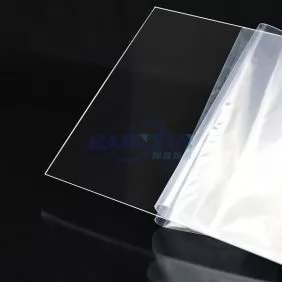Acrylic sheet has been used in various fields due to its excellent characteristics, especially in the optical field. So do you know how to maintain acrylic sheet to extend its service life? As a acrylic sheet supplier, I’d like to share it with you.
Optical Clear Acrylic Sheet
Maintenance skills of Acrylic Sheet
Acrylic Sheet Waxing
If you want the brilliance of the acrylic sheet, you can use liquid polishing wax and wipe it evenly with a soft cloth to achieve the goal.
Adhesion of Acrylic Sheet
If the product is accidentally damaged, you can use an adhesive such as methylene chloride or a quick-drying agent to stick it.
Cleaning of Acrylic Sheet
Acrylic sheet, if there is no special treatment or hardening agent added, the product itself is easy to wear and scratch. Therefore, the general dust treatment can be wiped with chicken feather blanket or rinsed with water, and then wiped with a soft cloth. If the surface is oily, you can add water with a soft detergent and scrub it with a soft cloth.
Polishing of Acrylic Sheet
If the product is scratched or the surface wear is not very serious, you can try to use a polishing machine (or car waxing machine) to install a cloth wheel, dip an appropriate amount of liquid polishing wax, and evenly polish it to improve.
Storage of Acrylic Sheet
Please ensure that acrylic sheet is placed in a cool, ventilated and dry place. In high temperature storage environment, it is recommended to use PE plastic film to package Acrylic Sheet.
Application Note
Prevent High Temperature
The temperature of the acrylic panel should not be higher than 90 degrees during continuous application, because the thermal deformation of the general acrylic panel is stable at about 100 degrees, and the temperature of the general acrylic panel will cause thermal deformation at 98 degrees. Therefore, high temperature deformation of acrylic products should be prevented. .
Prevent Sharp Objects From Touching
The surface hardness of acrylic sheet is equivalent to that of aluminum. Although the hardness is now great, it is still very easy to scratch. Therefore, we try our best to keep acrylic sheet away from the touch and friction of these sharp objects.
Pay Attention to Thermal Expansion and Contraction
Acrylic sheet has the characteristics of thermal expansion and contraction. In summer, the length, width, and thickness of Acrylic Sheet will increase; in winter, it decreases. The thermal expansion coefficient of acrylic sheet is relatively large, and its expansion and contraction is about nine times that of metals. Therefore, the factory should consider the thermal expansion and cold shrinkage coefficients of acrylic panels in the installation process, and there must be stretch gaps in the assembly process. This is the detail that must be paid attention to in the process of assembling the acrylic panel.
Kunxin has the tre acrylic sheet of high quality, welcome to consult!

评论
发表评论